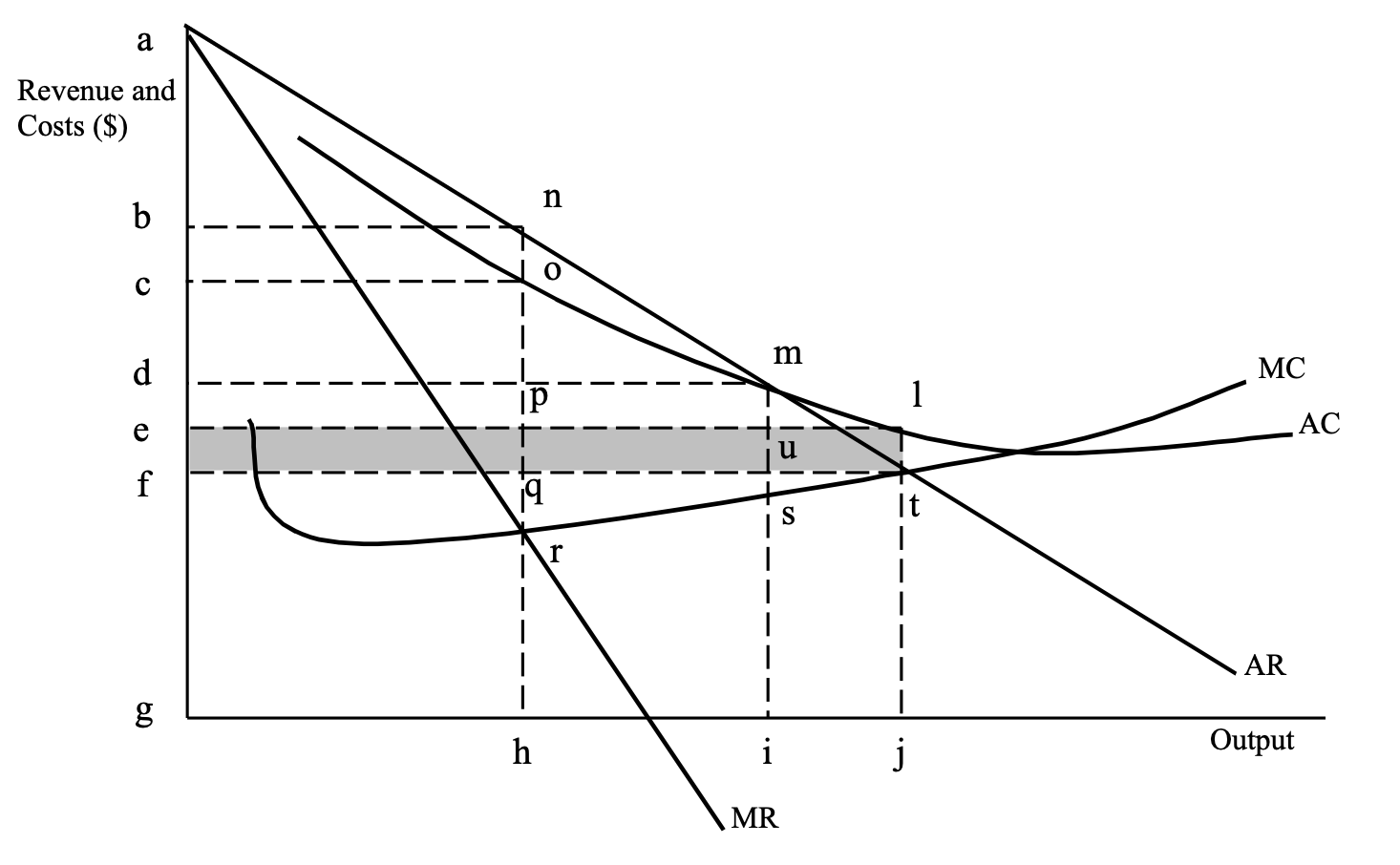Chapter 8: The Costs of Production
Opportunity cost - Value of resource in best alternative use
Explicit costs - Monetary payments for use of resources owned by others
Implicit costs - Opportunity costs of using self-owned/self-employed resources; monetary payments that resources could’ve earned in best alternative use
Accounting profit ignores implicit costs + overstates economic success
Normal profit - Cost of doing business
Economic costs = Explicit costs + implicit costs
Economic profit = Total revenue - economic costs
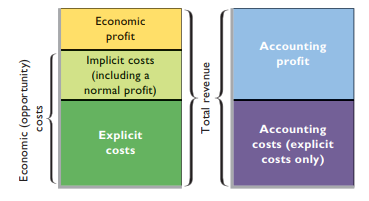
Short run - Period too brief for firm to alter plant capacity, but long enough to change resources like hourly labor, raw materials, etc.
Long run - Period long enough to change quantities of all resources it employs, including plant capacity
Total product (TP) - Total output of good/service produced
Marginal product (MP) - Extra output of product with adding unit of variable resource
- Slope of total product curve
Average product (AP) - Output per unit of labor input
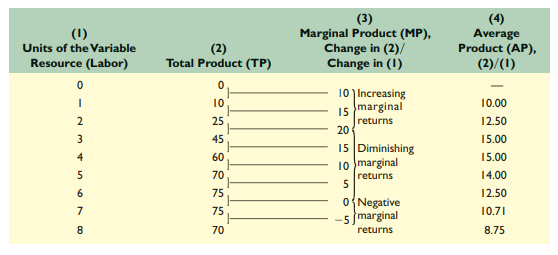
Law of diminishing returns - Successive units of variable resource added to fixed resource → Marginal product for each additional unit of variable resource will decline
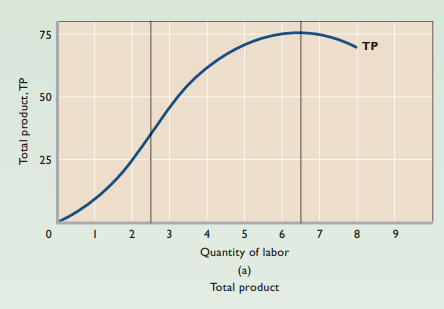
Marginal product greater than average product → Average product increasing
Fixed costs - Aren’t affected by changes in output
- Must be paid even if output is zero
Variable costs - Costs that change w/ level of output
Total cost = Total fixed costs + total variable costs
Average fixed cost (AFC) = Total fixed cost / output
Average variable cost (AVC) = Total variable cost / output
Average total cost (ATC) = Total cost / output
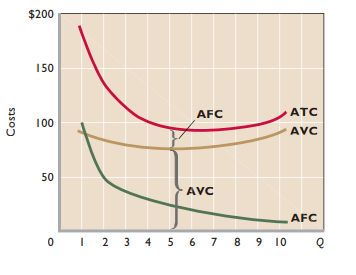
Marginal cost - Extra cost of producing one more unit of output
- Graph’s shape is consequence of law of diminishing returns
Marginal cost less than average total cost → ATC falls
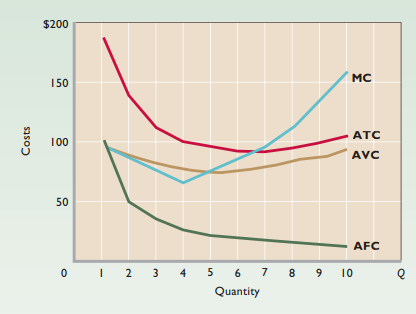
Changes in resource prices or technology → Costs change and cost curves shift
- Discovery of new technology → Productivity of all inputs increase
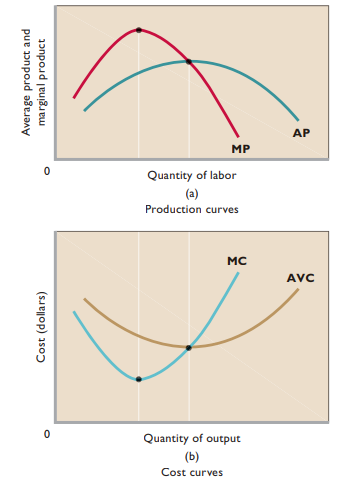
Economies of scale - Down-sloping part of long run ATC curve; as plant size increases, a number of factors will for a time lead to lower average costs of production
- Labor specialization - Increased specialization in the
use of labor becomes more achievable as a plant
increases in size - Managerial specialization - Large-scale production
also means better use of, and greater specialization in,
management - Efficient capital - Large-scale producers have a high volume of production, resulting in effective use of equipment
- Labor specialization - Increased specialization in the
Diseconomies of scale - Difficulty of efficiently controlling and coordinating a firm’s operations as it becomes a large-scale producer
- Expansion of management hierarchy → Communication + cooperation problems
Constant returns to scale - Long run average cost doesn’t change
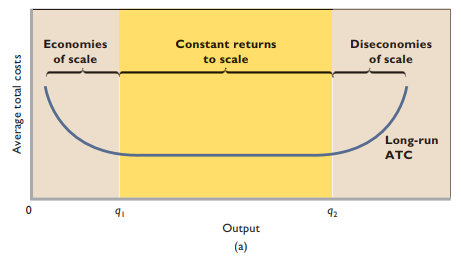
Minimum efficient scale (MES) - Lowest level of output at which a firm can minimize long-run average costs
Natural monopoly - Average total cost is minimized when only one firm produces the particular good or service
